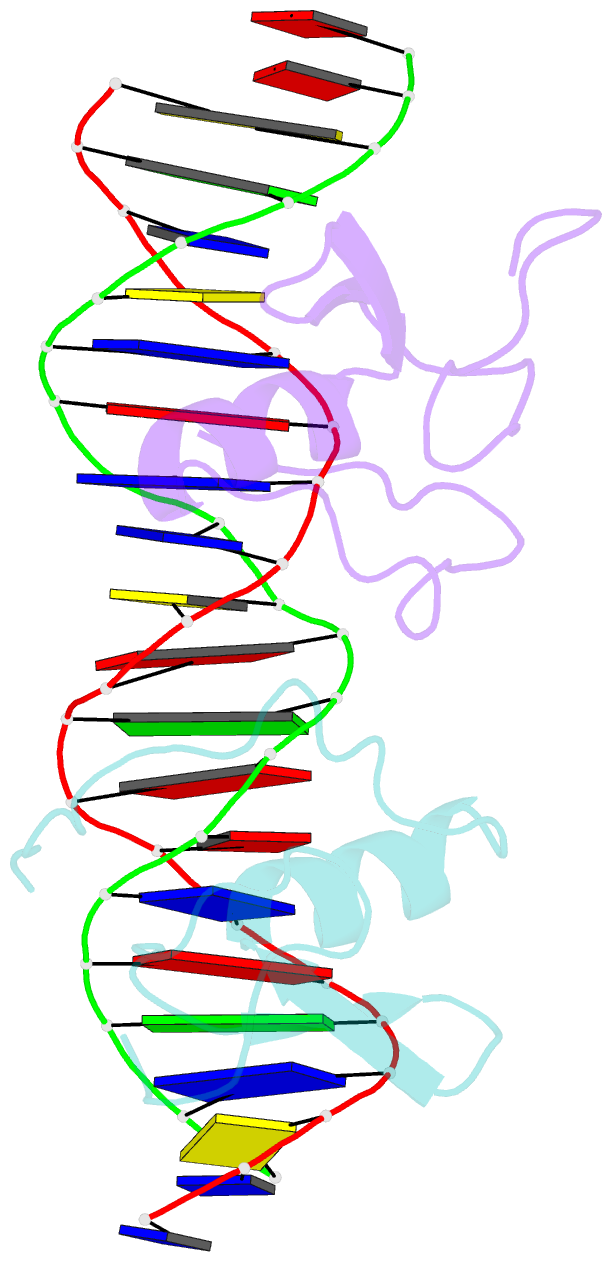Summary information and primary citation
- PDB-id
- 3dfv; SNAP-derived features in text and JSON formats;
DNAproDB
- Class
- transcription-DNA
- Method
- X-ray (3.1 Å)
- Summary
- Adjacent gata DNA binding
- Reference
- Bates DL, Chen Y, Kim G, Guo L, Chen L (2008): "Crystal structures of multiple GATA zinc fingers bound to DNA reveal new insights into DNA recognition and self-association by GATA." J.Mol.Biol., 381, 1292-1306. doi: 10.1016/j.jmb.2008.06.072.
- Abstract
- The GATA family of transcription factors (GATA1-6) binds selected GATA sites in vertebrate genomes to regulate specific gene expression. Although vertebrate GATA factors have two highly conserved zinc finger motifs, how the two fingers act together to recognize functional DNA elements is not well understood. Here we determined the crystal structures of the C-terminal zinc finger of mouse GATA3 bound to DNA containing two variously arranged GATA binding sites. Our structures and accompanying biochemical analyses reveal two distinct modes of DNA binding by GATA to closely arranged sites. One mode involves cooperative binding by two GATA factors that interact with each other through protein-protein interactions. The other involves simultaneous binding of the N-terminal zinc finger (N-finger) and the C-terminal zinc finger of the same GATA factor. Our studies represent the first crystallographic analysis of GATA zinc fingers bound to DNA and provide new insights into the DNA recognition mechanism by the GATA zinc finger. Our crystal structure also reveals a dimerization interface in GATA that has previously been shown to be important for GATA self-association. These findings significantly advance our understanding of the structure and function of GATA and provide an important framework for further investigating the in vivo mechanisms of GATA-dependent gene regulation.





